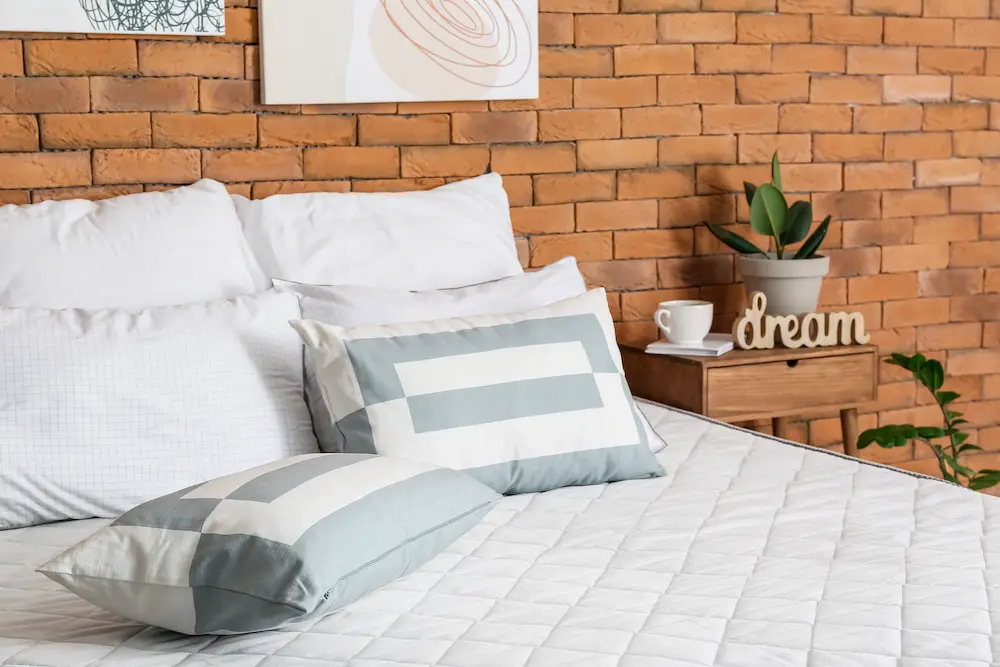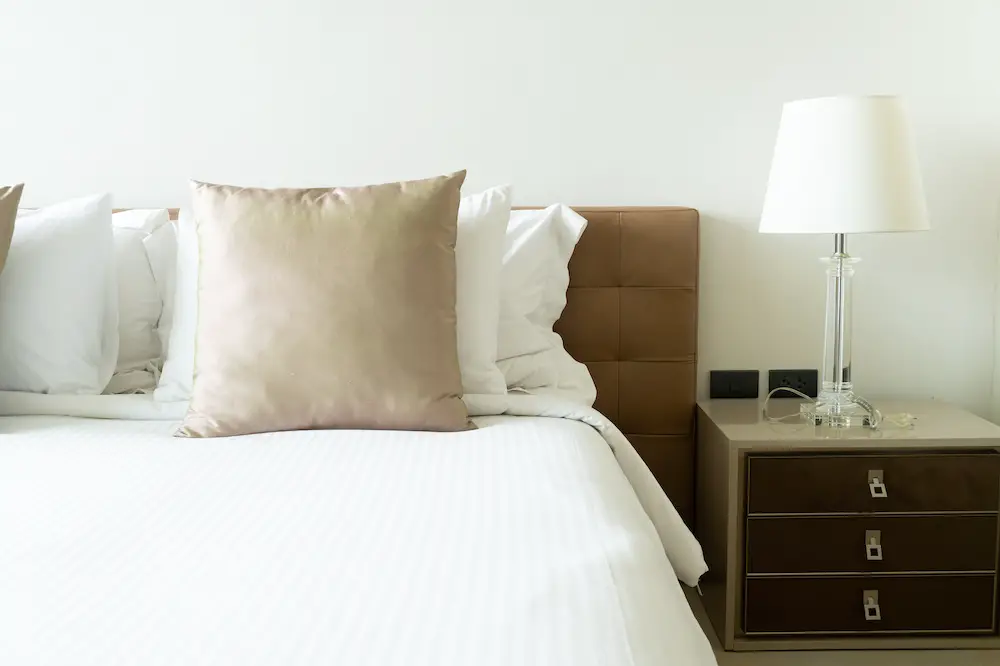Over the years, it has become common knowledge that Tempurpedic’s mattresses are among the highest-quality options you’ll find on the market.
Still, anyone looking for a new mattress often wonders what is a Tempurpedic mattress made of.
Knowing the difference between this material and others, such as memory foam, can help you find the perfect mattress.
The History of Tempurpedic
The concept of memory foam mattresses wasn’t popular until Tempurpedic started using the material in the early ‘90s.
At the time, innerspring mattresses and water beds were all the rage, especially if you wanted ample support.
With the introduction of memory foam, more and more people began to learn the benefits of contouring materials.
Interestingly, the company’s mattress evolution started with the creation of a product line for NASA astronauts.
They were tasked with creating a material that would absorb the G-force that astronauts experience while venturing to space.
Over time, Tempurpedic’s researchers perfected the material to where it was ideal for sleep.
Since the early ‘90s, Tempurpedic has crafted a unique product designed to give you a more peaceful night’s rest.
Instead of using generic memory foam, their Tempur material is far more comfortable and durable.
Today, Tempurpedic mattresses are crafted using technologically advanced materials to accommodate all types of sleepers.
Tempur Material vs. Memory Foam
There’s no doubt that Tempur feels just like memory foam when you press down on it.
However, it has a few unique concepts that set it apart and make it a far better investment.
Let’s take a look at some of the most common differences between the two.
Open-Cellular Structure
Tempur has an open-cellular structure that allows the material to adjust to your body’s contours.
When lying down, your body heat works its way into the material’s structure, allowing the material to soften beneath you.
Overnight, your mattress will continuously adapt to your sleeping position to offer optimal comfort and support.
Memory foam is known to adapt to your sleeping position, but it is not likely to change overnight.
The unique process of heat absorption in Tempurpedic mattresses is what helps them adapt to your specific needs.
Also, you will find that co-sleepers will have a personalized shape on either side of the mattress for better sleep.
Reduced Motion Transfer
Nearly everyone has experienced a restless night at least once in their life.
The continuous tossing and turning can make it impossible to fall asleep and can annoy your partner.
Tempur material is a phenomenal option for reducing motion transfer in your bed.
Whether you are tossing and turning or your partner can’t lie still, you will be less likely to feel any movement.
When on your mattress, you will find the material absorbs pressure, keeping you in the same position for longer.
Not only will you feel like you are sleeping on a plush cloud, but you will also feel your contours being hugged gently.
Weight Distribution
A significant concern everyone has with memory foam is its tendency to sink wherever weight is placed.
At times, it can feel as if it is more challenging to move in bed, as your body is being supported too much.
On the other hand, Tempur is a great middle-ground, offering free movement paired with support.
Your weight is evenly distributed across the surface of the mattress, so you don’t feel like you are sinking in.
Also, you will find that the weight distribution helps alleviate pressure on your sensitive joints.
As a result, you are far more likely to wake up feeling refreshed and rejuvenated with this material.

Heat Dissipation
Another critical difference between Tempur and memory foam has to do with heat dissipation.
There is a high percentage of sleepers that get hot at night, causing restlessness.
Your Tempurpedic mattress is designed using a material that promotes a better microclimate for sleep.
As such, temperatures between your mattress and your sheets will be significantly reduced.
Instead of trapping heat in the material and causing you to sweat, heat is transferred throughout the mattress.
As an added benefit, some mattresses feature TEMPUR-CM+ climate management for better temperature regulation.
Less Out-Gassing
When you get your new mattress, it can be tempting to set it up on your bed and sleep on it right away.
Unfortunately, recently manufactured memory foam mattresses require 48 to 72 hours to do something called out-gassing.
Out-gassing is when you unpack the mattress and deflate it, giving it time to air out any manufacturing odors.
Tempurpedic mattresses are manufactured specifically to make them ready to sleep on much faster.
Each mattress has a rest period in the factory, allowing for out-gassing to occur before shipping.
When your mattress arrives at your door, you won’t have to worry about letting harmful odors and toxins into your home.
What Is a Tempurpedic Mattress Made Of?
There are plenty of benefits that Tempurpedic mattresses have over memory foam.
While some of the materials are similar to other mattresses, it is how these materials are used that makes Tempurpedic mattresses different.
The most commonly used materials in Tempurpedic mattresses include:
Visco-Elastic Foam
Visco-elastic foam is another name for the memory foam initially developed by NASA as early as the ‘70s.
This material has low resistance and slow response, offering a plush, soft surface.
It is what makes mattresses easily adaptable to your specific contours while also lowering bounce and motion transfer.
High-Density Polyurethane Foam
High-density polyurethane foam is a commonly used material, especially in memory foam mattresses.
It is most often used as the base layer, as it adds extra support to the mattress.
You might also find this material in innerspring or hybrid mattresses, helping cloak the feeling of spring systems.
Bamboo
Tempurpedic often uses bamboo as a cover material for their mattresses.
It is known for its breathability and its durability, especially over years of use. It is a fantastic option for regulating heat.
Cotton
Cotton is another common material used in mattress covers, as it is affordable, easy to maintain, and soft to the touch.
You will love the breathability of cotton, especially because it allows for optimal heat transfer in all environments.
The majority of Tempurpedic mattresses feature a cotton cover.
Final Thoughts
Answering what is a Tempurpedic mattress made of can help you make the decision between one mattress and another.
With similar materials to standard memory foam beds, the design of these mattresses is what makes them differ considerably.
There is no doubt that Tempurpedic mattresses are made for all types of sleepers looking to upgrade their beds.

